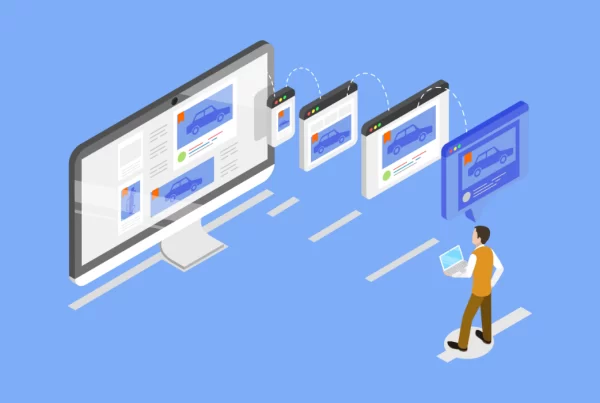Last Updated on 2 years ago by
Unlocking higher levels of customer satisfaction and transforming your service strategy is the key to success in today’s competitive business landscape. By mastering customer experience journey mapping, businesses can ensure that every interaction with their brand is meaningful and memorable. In this comprehensive guide, you will discover expert insights, practical tips, and best practices for creating effective customer journey maps that drive customer loyalty and business growth.
The Importance of Customer Experience Journey Mapping in Modern Business
In today’s highly competitive business landscape, customer experience plays a crucial role in determining the success and longevity of a company. Businesses that prioritize and consistently deliver exceptional customer experiences gain a significant advantage over their competitors. The modern customer expects more than just a product or service; they seek memorable and satisfying interactions at every touchpoint.
What Is a Customer Journey?
A customer journey refers to the entire process a customer goes through from the moment they become aware of a brand to the post-purchase stage. It encompasses all the interactions and touchpoints a customer has with a company, including research, engagement, purchase, and support. Understanding this journey is essential for businesses to gain insights into customer behavior, preferences, pain points, and opportunities for improvement.
The Strategic Value of Customer Experience Journey Mapping the Experience
Mapping the customer journey provides businesses with a strategic advantage by helping them identify and optimize critical moments that impact the overall customer experience. By mapping out the journey, businesses can analyze each touchpoint and interaction, assess customer emotions at different stages, and uncover pain points that hinder customer satisfaction. This strategic approach enables businesses to align their efforts with customer expectations and create a seamless and satisfying experience at every stage of the journey.
Key Components of a Comprehensive Journey Map
A comprehensive customer experience journey mapping involves several key components that provide a detailed understanding of the customer experience. By considering these components, businesses can create holistic journey maps that capture the entire customer journey and drive meaningful insights. This section delves into the critical elements of a comprehensive journey map, including:
-
Identifying Touchpoints
Identifying touchpoints is a crucial step in creating a comprehensive journey map. Touchpoints are the specific moments when customers interact with a brand, whether it’s through a website, social media, or physical store. By mapping these touchpoints, businesses can gain a better understanding of where and how customers engage with their brand and identify areas for improvement.
-
Capturing Customer Emotions
Customer emotions play a significant role in shaping their overall experience. By capturing customer emotions at each touchpoint, businesses can gauge the emotional impact of their interactions and identify opportunities to enhance positive emotions and mitigate negative ones. This helps create a more emotionally satisfying experience for customers.
-
Pinpointing Pain Points
Pinpointing pain points is essential for understanding the challenges and frustrations customers encounter throughout their journey. By identifying these pain points, businesses can take proactive measures to address them, improve the customer experience, and prevent customer churn. Pinpointing pain points allows companies to prioritize efforts and allocate resources where they are most needed.
-
Developing Customer Personas
Customer personas are fictional representations of the target customers that businesses serve. By developing well-defined customer personas, companies can gain insights into the needs, preferences, and behaviors of their target audience. These personas help align business strategies, customize marketing messages, and create personalized experiences that cater to specific customer segments.
By considering these key components in the comprehensive customer experience journey mapping, businesses can gain a deeper understanding of the customer experience. This knowledge enables them to make data-driven decisions, optimize touchpoints, and tailor experiences that resonate with their customers, ultimately driving business growth and customer loyalty.
Using Data to Inform Your Customer Experience Journey Mapping
Data-driven customer experience journey mapping is a powerful tool that allows businesses to gain valuable insights into their customers’ experiences. By gathering customer data and analyzing touchpoints and interactions, companies can create accurate and meaningful journey maps that drive improved experiences and increased customer satisfaction.
Gathering Customer Data
One of the first steps in data-driven customer experience journey mapping is collecting customer data. This can be done using various methods, including surveys, customer feedback, and analytics tools. Surveys allow businesses to obtain direct feedback from their customers, gaining insights into their preferences, pain points, and expectations. Customer feedback, whether through online reviews or direct communication, offers valuable qualitative data that complements survey results.
Analytics tools play a crucial role in gathering quantitative data, providing businesses with insights into customer behavior, preferences, and patterns. These tools help identify touchpoints where customers interact with the brand, allowing businesses to understand the effectiveness of each touchpoint in the customer journey.
Analyzing Touchpoints and Interactions
Analyzing touchpoints and interactions is a critical step in understanding the customer experience journey. By examining how customers engage with various touchpoints, businesses can identify opportunities for improvement and areas where they can deliver exceptional experiences.
Data analysis enables businesses to identify patterns and trends in customer behavior, such as common pain points or preferred channels of interaction. By understanding these preferences, businesses can tailor their customer experience strategy to meet customer expectations and provide a seamless and satisfying journey.
Through touchpoint analysis, businesses can also identify areas where customer interactions may be causing frustration or dissatisfaction. By addressing these pain points, businesses can optimize touchpoints to ensure a more positive and enjoyable experience for their customers.
Overall, using data to inform customer experience journey mapping is essential for businesses looking to enhance their customer experiences. By gathering customer data and analyzing touchpoints and interactions, businesses can create accurate and meaningful journey maps that drive improved experiences and increased customer satisfaction.
Aligning Organizational Goals with Customer Expectations
Creating exceptional customer experiences requires organizations to align their goals with customer expectations. By incorporating customer expectations into their vision and mission, businesses can develop a customer-centric business strategy that places the customer at the heart of decision-making. This alignment ensures that every aspect of the organization, from product development to customer service, is designed to exceed customer expectations and deliver a seamless and consistent experience throughout the customer journey.
When organizational goals are aligned with customer expectations, businesses can better understand their customers’ needs, preferences, and pain points. This customer-centric approach enables organizations to tailor their products, services, and interactions to address these specific needs and create meaningful connections with their customers.
One strategy for aligning organizational goals with customer expectations is to regularly gather and analyze customer feedback. By actively listening to their customers, businesses can gain valuable insights into their expectations and identify areas for improvement.
Additionally, organizations can develop a customer-centric business strategy by focusing on building long-term relationships and fostering customer loyalty. This involves investing in initiatives such as personalized marketing campaigns, loyalty programs, and proactive customer support.
By incorporating customer expectations into their organizational goals and strategy, businesses can create a customer-centric culture that permeates every department and function. This alignment not only drives customer satisfaction and loyalty but also contributes to the overall success and growth of the business.
Integrating Customer Feedback into Journey Maps
Customer feedback is an invaluable resource that can greatly enhance the effectiveness of journey maps. By incorporating customer feedback into the customer experience journey mapping process, businesses can gain deeper insights into the customer experience and identify areas for improvement.
Eliciting Actionable Feedback
One of the most effective ways to gather customer feedback is through surveys. By designing well-structured surveys that target specific aspects of the customer experience journey mapping, businesses can collect valuable data to inform their journey maps. Surveys can be distributed through various channels, such as email, mobile apps, or website pop-ups, to reach a wide range of customers. Additionally, conducting in-depth interviews with select customers can provide qualitative insights that may not be captured through surveys alone.
Online reviews are another valuable source of feedback. Monitoring platforms like Yelp, Google Reviews, or industry-specific review sites can help businesses identify common pain points and areas of satisfaction. It is crucial to actively engage with customers who leave reviews, responding promptly and addressing their concerns. This not only shows that the business values customer feedback but also creates an opportunity to turn a negative experience into a positive one.
Closing the Loop with Customers
Collecting customer feedback is only the first step. It is equally important to close the loop with customers by taking appropriate action based on their feedback. This involves analyzing the feedback received, identifying trends, and implementing changes to improve the customer experience. By addressing customer concerns and making meaningful improvements, businesses can demonstrate their commitment to customer satisfaction and build long-lasting relationships.
Moreover, businesses should actively communicate with customers about the actions taken as a result of their feedback. Whether it’s informing them about a new feature, a policy change, or the resolution of an issue they faced, keeping customers in the loop creates transparency and builds trust. This process of continuous communication helps customers feel valued and heard, enhancing their overall satisfaction with the brand.
Integrating customer feedback into journey maps allows businesses to gain a comprehensive understanding of the customer experience and make data-driven decisions. By incorporating actionable feedback obtained through surveys, interviews, and online reviews, businesses can identify pain points, optimize touchpoints, and improve the overall customer journey. This approach enhances customer satisfaction and positions the business for long-term success in today’s competitive landscape.
Designing the Ultimate Customer Experience Through Iterative Mapping
Designing the ultimate customer experience requires an iterative approach to journey mapping. By continuously refining and optimizing journey maps based on ongoing feedback and data analysis, businesses can create exceptional experiences that exceed customer expectations. Iterative mapping allows organizations to stay ahead of evolving customer preferences and ensure continuous improvement in the customer journey.
Iterative mapping involves several key steps:
- Collecting Feedback: To design the ultimate customer experience, businesses need to gather feedback from customers at different touchpoints. This feedback can provide valuable insights into pain points, areas for improvement, and customer preferences.
- Updating Journey Maps: Based on the feedback received, journey maps need to be regularly updated and revised. This ensures that the maps accurately reflect the customer experience and remain relevant over time.
- Analyzing Data: Data analysis plays a crucial role in iterative mapping. By analyzing customer data and feedback, businesses can identify patterns, trends, and areas where optimization is needed.
- Optimizing Touchpoints: Through iterative mapping, organizations can identify touchpoints in the customer journey that require optimization. This may involve making changes to processes, systems, or communication channels to enhance the customer experience.
- Testing and Implementing Changes: Once optimizations are identified, they can be tested and implemented to measure their impact on the customer experience. This iterative process ensures that changes are effective and align with the ultimate goal of providing an exceptional customer experience.
Continuous improvement is a central aspect of iterative mapping. By regularly reviewing and refining journey maps, businesses can ensure that the ultimate customer experience is consistently being achieved. It allows organizations to adapt to changing customer needs and preferences, ultimately driving customer loyalty and business growth.
In summary, adopting an iterative mindset and continuously refining journey maps based on feedback and data analysis is essential for designing the ultimate customer experience. By focusing on continuous improvement and customer journey optimization, businesses can create exceptional experiences that foster customer loyalty and drive long-term success.
Common Challenges in Customer Experience Journey Mapping
Overcoming Internal Roadblocks
While customer experience journey mapping offers numerous benefits for businesses, it is not without its challenges. One common roadblock that organizations face is internal resistance. This can manifest in various ways, such as teams not fully embracing the concept of journey mapping, reluctance to share data or insights, or simply a lack of understanding about its value. Overcoming internal roadblocks requires effective communication, education, and buy-in from key stakeholders. By fostering a culture of collaboration and emphasizing the benefits of journey mapping, businesses can overcome resistance and gain the necessary support to drive impactful customer experiences.
Ensuring Map Accuracy and Relevance Over Time
Another challenge in customer experience journey mapping is maintaining map accuracy and relevance over time. Customer journeys are not static and evolve as consumer expectations and market dynamics change. This poses a challenge for businesses to keep their journey maps up to date and reflective of the current customer experience. There may also be challenges in ensuring the accuracy of the data inputted into the maps, as data quality can vary and impact the overall effectiveness of the maps. To address these challenges, businesses should establish processes for regularly reviewing and updating journey maps, including gathering fresh data and insights. By continuously monitoring and refining the maps, businesses can ensure that they remain accurate and relevant, enabling them to make informed decisions and deliver exceptional customer experiences.
Technological Tools and Software for Advanced Journey Mapping
Advanced journey mapping is facilitated by a range of technological tools and software. By leveraging these advanced technologies, businesses can gain deeper insights into customer behavior and preferences, allowing them to tailor their experiences for maximum impact. This section will explore various tools and software available for effectively mapping and analyzing customer journeys, including:
- Customer Experience Analytics Platforms: These platforms provide businesses with comprehensive analytics and reporting capabilities, allowing them to track customer interactions, identify trends, and measure the success of their customer experience initiatives. By leveraging customer experience analytics platforms, businesses can make data-driven decisions and optimize their journey maps.
- Visualization Tools: Visualization tools enable businesses to visually represent their journey maps, making it easier to understand and communicate complex customer journeys. These tools often offer drag-and-drop functionality, customizable templates, and interactive features, allowing businesses to create engaging and informative maps.
- Data Integration Solutions: Data integration solutions allow businesses to collect, consolidate, and analyze customer data from various sources, such as CRM systems, social media platforms, and customer feedback channels. By integrating data from multiple touchpoints, businesses can gain a holistic view of the customer journey and uncover valuable insights.
By embracing these technological tools and software, businesses can take their journey mapping efforts to the next level, enhancing their understanding of customer needs and preferences, and ultimately delivering exceptional customer experiences.
Conclusion
In conclusion, the mastery of customer experience journey mapping is essential for businesses aiming to deliver exceptional customer experiences and achieve long-term success. By recognizing the significance of customer experience and effectively incorporating the key components of comprehensive journey maps, such as touchpoints, customer emotions, pain points, and personas, businesses can design customer journeys that surpass expectations and cultivate strong customer loyalty.
Furthermore, harnessing the power of data, feedback, and technology is crucial in shaping customer experiences. Through data-driven insights and the integration of customer feedback into journey maps, businesses can continuously improve their offerings and enhance the overall customer experience. Advanced technological tools and software, ranging from customer experience analytics platforms to data integration solutions, further enable businesses to gain deeper insights into customer behavior and preferences.
Embracing an iterative approach and actively addressing common challenges in journey mapping are also key factors in ensuring the accuracy, relevance, and effectiveness of journey maps over time. By continually refining and updating journey maps based on ongoing feedback and data analysis, businesses can remain adaptable to changing customer expectations and maintain a competitive edge in the market.
In summary, customer experience journey mapping is a strategic process that empowers businesses to create meaningful and memorable customer experiences. By understanding the value of customer experience, leveraging data, feedback, and technology, and embracing an iterative mindset, businesses can unlock the potential to deliver the ultimate customer experience, fostering long-term loyalty and driving overall business success.












